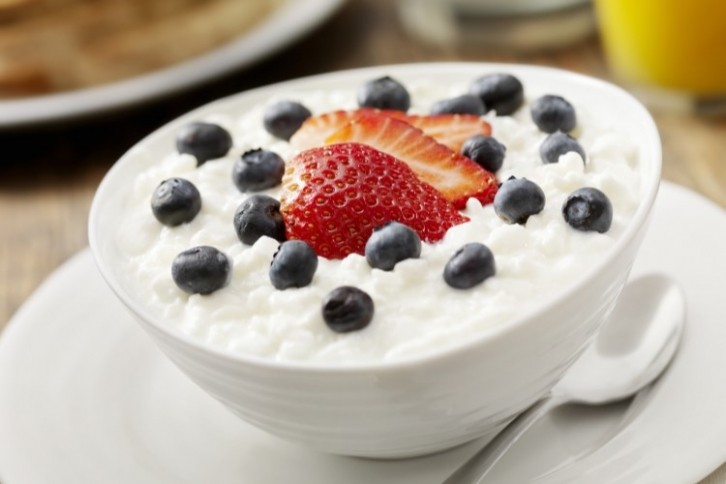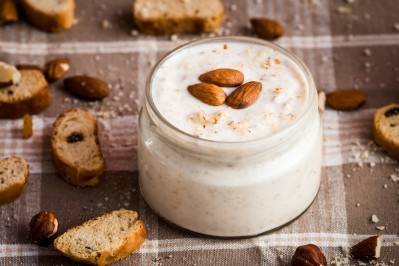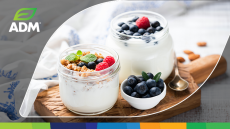Beyond cottage cheese ice cream: Cultured dairy's versatility in form and function makes the category attractive to consumers

DairyReporter: What are some of the sustained consumer trends around cultured dairy? What’s new and what’s on the horizon?
Megan Patterson, Fonterra Americas Marketing Communication Manager: A sustained trend we’re seeing in the cultured dairy space is the need for higher protein content in products. Such high-protein products are coming to life in various formats. Post-pandemic behaviors showed the rise of on-the-go formats such as squeezable pouches, which have continued momentum. Yogurt in spoonable and drinkable forms is also making a comeback. Perhaps the greatest renaissance we’ve seen lately is the virality of cottage cheese.
DR: What are consumers looking for from active nutrition dairy products, from ingredients to formats? How has the ambient dairy market as well as the yogurt and drinking yogurt markets evolved with regards to this?
MP: Consumers want fast, on-the-go options for active nutrition dairy products. First and foremost, they’re looking for products that are high in protein and help with muscle recovery. In line with overall wellness trends, consumers demand added benefits such as immunity boosts, improved gut health, cognitive performance and sleep through ingredients like prebiotics and probiotics. It is crucial for active consumers to build (and maintain) strong bones. For that reason, calcium and phosphorus – the original dairy selling points of the ‘90s – have a newfound importance in active nutrition.
Ready-to-drink and ready-to-mix formats have exploded in popularity in the ambient dairy market. The highly successful ambient dairy brands promote active well-being and recovery benefits, oftentimes boasting high-protein “fast breakfast” options.
Yogurt and drinking yogurt suppliers are tapping into nostalgic, unique flavors to reach new consumers. They’re winning over consumers by evoking the flavors of childhood while still promoting bone health, gut health and overall well-being.
DR: How important is high protein content to both mainstream consumers and the active consumer? What scope is there for manufacturers to differentiate through protein innovation?
MP: High protein content is immensely important for all consumers right now. Complete proteins are essential for active consumers to build muscle, aid digestion, and improve joints. One specific demographic vigilant about protein intake is millennial parents. These consumers are concerned with how much protein their children and parents eat and drink. To them, protein is the key to unlocking longevity, mobility, and flexibility. Overall, mainstream consumers now understand and seek high-protein products thanks to social media, like TikTok and Pinterest, democratizing nutrition information.
DR: Your Pro-Optima WPC ingredient is said to be able to deliver ‘more protein in yogurts than ever before’ depending on application. Can you provide a few examples of how manufacturers can achieve high protein formulations without affecting texture or other important functional properties?
MP: Fonterra’s Grade A functional Whey Protein Concentrate (fWPC), Pro-Optima, is a first-of-its-kind ingredient. It enables unrivaled protein enhancement in cultured products, especially yogurt, unlocking a range of textures. Pro-Optima is heat stable, doesn’t alter taste and depending on application, can double the protein content of some products. Pro-Optima is suitable for a variety of applications in cultured products like spoonable yogurt, drinking yogurt, mousses, nutritional yogurt bars, and more. Manufacturers can explore Pro-Optima’s capabilities by adding unique solutions such as probiotics or phospholipids for added benefits.
Pro-Optima’s benefits are maximized when used in spoonable or drinking yogurt, but can be added to products like kefir.
DR: How is the demand for personalized nutrition playing out with regards to cultured dairy products, such as low-fat and drinking yogurts in particular? What scope for innovation is there in these categories?
MP: Overall, there is a greater demand for personalized nutrition than ever before. Consumers have a greater interest in well-rounded diets and using food as medicine over low-calorie options. They’re more in tune with nutritious, functional foods that sustain and nourish. Cultured dairy offers so much room for innovation. Whether it’s increasing protein levels or reinventing nostalgic flavors, formulators can meet consumers’ needs for personalized nutrition.
DR: The cottage cheese ice cream trend went viral a few months ago. Do you feel there is sustained demand for products that tick both the ‘functional’ and ‘indulgence’ boxes, or was this more a flash in the pan? What are some ways through which formulators can entice consumers that are seeking indulgence as well as health benefits?
MP: The cottage cheese craze is certainly not a flash in the pan. Before cottage cheese ice cream, whipped cottage cheese was making the rounds. I’m sure the next viral recipe is already starting to circulate!
Prior to the pandemic, the compound annual growth rate for the cottage cheese industry suggested that the product would skyrocket in popularity. That growth was delayed and is now just taking flight.
As I mentioned earlier, there are a growing number of consumers who see food as medicine, so I anticipate seeing an increase in foods that are both indulgent and functional. With something like cottage cheese ice cream, you can be indulgent and mindful. It doesn’t restrict consumers or incite guilt; instead, it satiates and brings joy.
Consumers are looking for ways to creatively consume more protein, and social media has allowed the masses to share ideas and recipes. While products like fWPC ingredients already exist to enhance protein levels, dairy suppliers should consider how to entice consumers by using what they already have.
With trends like cottage cheese ice cream taking off on social media, marketing departments need to quickly identify what is trending, partner with influencers and insert their brand into the social conversation. They don’t have to create a new product every time a trend circles around; they can add depth and creativity to tried-and-true products.













